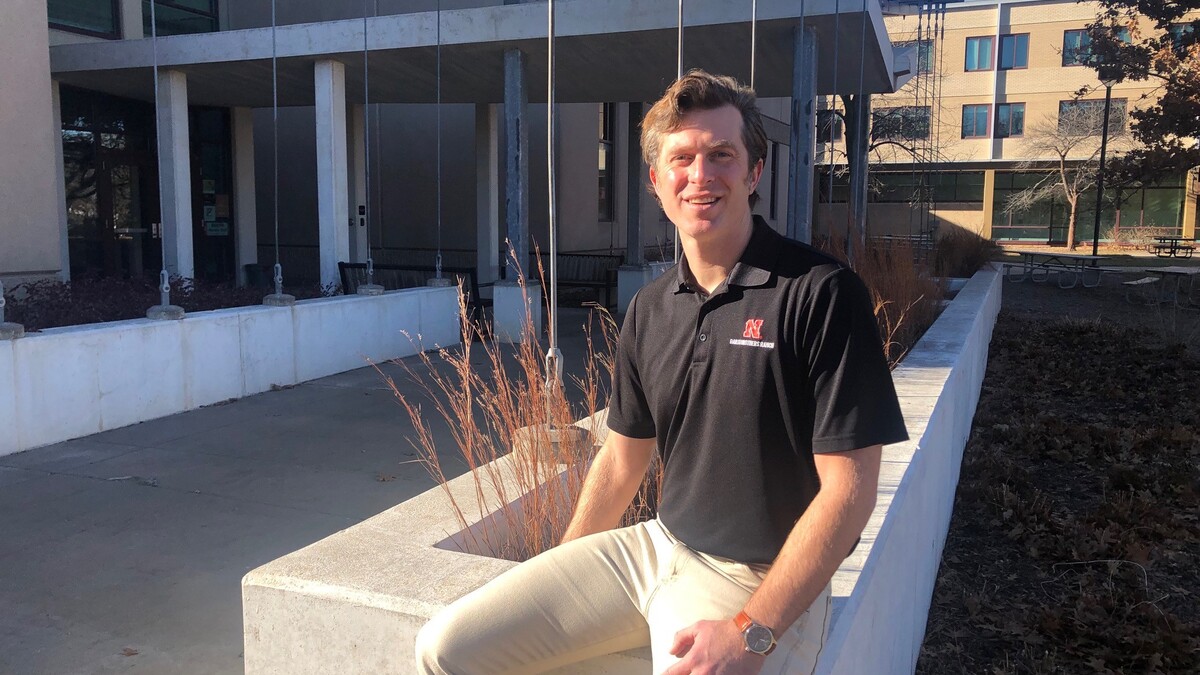
Lincoln, Neb. —The Entomological Society of America has given 2022 national awards for excellence at the faculty, graduate student and undergraduate levels at the University of Nebraska-Lincoln.
Joe Louis, Eberhard Professor of Agricultural Entomology at UNL, received the society’s Plant-Insect Ecosystem’s (P-IE) Recognition Award in Entomology. Heena Puri, a Ph.D. student at the UNL Department of Entomology, received the society’s P-IE Kenneth and Barbara Starks Plant Resistance to Insects Graduate Student Award. Edith Ikuze, who recently began her master’s degree work at the department, received the society’s P-IE Undergraduate Student Achievement in Entomology Award. Puri and Ikuze are both pursuing research under the mentorship of Louis.
The award Louis received salutes a scientist who “has contributed significantly to agricultural advancement through work in the field of entomology,” the society says. Among the selection criteria are quality and originality of research, quality of publications, and impact of research findings on the understanding of the subject.
Louis, who joined the UNL Department of Entomology and Department of Biochemistry in 2013, oversees the Institute of Agriculture and Natural Resources’ Molecular Plant-Insect Interactions Lab, which pursues a wide array of research projects to understand innate resistance mechanisms to strengthen plant defenses against insect assault.
During his career, Louis has received nearly $4.6 million in grant funding, including a $1.5 million grant from the National Science Foundation’s Faculty Early Career Development (CAREER) Program. He recently a $1.2 million grant from the joint NSF/National Institute of Food and Agriculture Plant-Biotic Interactions Program. He is also a contributor of more than 50 academic papers in several top-ranked plant science, entomological and interdisciplinary science journals.
Puri’s current research project focuses on the interaction between sorghum and aphids. Although aphids are important insect pests of plants that limit agricultural productivity, understanding of the defense signaling networks underlying monocot crop resistance to aphids remain largely unknown, and this is especially true for sorghum. Puri is utilizing a combination of molecular, biochemical and electrophysiological approaches to enable better understanding of the genetic basis of sorghum resistance to sugarcane aphids.
This summer she worked in Florida for Syngenta as a crop protection research and development Intern.
Puri’s ESA award salutes graduate students whose work contributes significantly to knowledge of plant resistance to insects. The recipient’s research is judged on the basis of contribution; creativity and innovation; and impact.
Ikuze’s P-IE Undergraduate Student Achievement in Entomology Award recognized her undergraduate research project in which she evaluated the role of lignin in sorghum resistance to sugarcane aphids. For her work, she used a blend of insect bioassays and electrophysiological techniques to achieve her research goals. This project was partially funded through the IANR Agricultural Research Division (ARD) Undergraduate Student Research Award, open competitively to students across all ARD departments.
Ikuze’s ESA award honors outstanding performance related to activity and achievement in entomology. The award criteria include originality and creativity in research; scientific rigor; and potential impact.
Louis, Puri and Ikuze will be presented the award at the 2022 ESA, Entomological Society of Canada (ESC), and the Entomological Society of British Columbia (ESBC) joint annual meeting, which will be held at Vancouver, Canada, during Nov. 13-16, 2022. All will receive an inscribed plaque and a monetary award. In addition, the student award winners will receive a waiver of registration to attend the annual meeting.
The ESA is the largest organization in the world serving the professional and scientific needs of entomologists and individuals in related disciplines. Founded in 1889, ESA has more than 7,000 members affiliated with educational institutions, health agencies, private industry and government.







